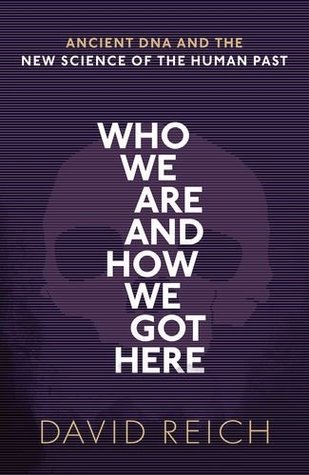More on this book
Community
Kindle Notes & Highlights
We discovered that the population of northern Europe was largely replaced by a mass migration from the eastern European steppe after five thousand years ago18
Could languages long extinct be recalled by unsealing a cave still reverberating with the echoes of words spoken there thousands of years ago?
scattered among hard-to-read, jargon-filled scientific papers,
population mixture is central to human nature.
Shouldn’t fundamental inquiry into who we are be the pinnacle of what we as a species hope to achieve? Isn’t an attribute of an enlightened society that it values intellectual activity that may not have immediate economic or other practical impact?
each person has not inherited any DNA from the great majority of his or her actual ancestors.
we inherit DNA from nearly everyone in our ancestral population who had a substantial number of offspring at times that remote in the past.
An
excavation at Shanidar Cave in Iraq has revealed nine skeletons, all apparently deliberately buried, one of which was a half-blind elderly man with a withered arm, suggesting
that the only way he could have survived is if friends and family had l...
This highlight has been truncated due to consecutive passage length restrictions.
archaic forms.
they had evolved to such an extent that they were at the very limit of biological compatibility.
North Africa, which is difficult to reach from southern parts of the African continent because of the barrier of the Sahara Desert, and which is more ecologically linked to West Eurasia.
The Nile Valley, for example, has been occupied by humans for the entire period since present-day Eurasians diverged from their closest relatives in sub-Saharan Africa.
Mixture is fundamental to who we are, and we need to embrace it, not deny that it occurred.
People like those at Stonehenge were building great temples to their gods, and tombs for their dead, and could not have known that within a few hundred years their descendants would be gone and their lands overrun. The extraordinary fact that emerges from ancient DNA is that just five thousand years ago, the people who are now the primary ancestors of all extant northern Europeans had not yet arrived.
Sometimes people were buried in kurgans with wagons and horses, highlighting the importance of horses to their lifestyle. The wheel and horse so
profoundly altered the economy that they led to the abandonment of village life.
the most likely location of the population that first spoke an Indo-European language was south of the Caucasus Mountains, perhaps in present-day Iran or Armenia, because ancient DNA from people who lived there matches what we would expect for a source population both for the Yamnaya and for ancient Anatolians. If this scenario is right, the population sent one branch up into the steppe—mixing with steppe hunter-gatherers in a one-to-one ratio to become the Yamnaya as described earlier—and another to Anatolia to found the ancestors of people there who spoke languages such as Hittite.
hither and yon
The truth is that India is composed of a large number of small populations.
The migrants who passed through emerged into North America’s Great Plains. Before them was a land filled with massive game that had never before met human hunters. Within a thousand years, the humans had reached Tierra del Fuego at the foot of South America, feasting on the bison, mammoths, and mastodons that roamed the landscape.
Anyone looking at a language map of the Americas can see that its appearance is qualitatively different from that of Eurasia or Africa, with dozens of language families restricted to small territories, compared to the vast swaths of territory in Eurasia and Africa inhabited by people who speak closely related tongues in the Indo-European, Austronesian, Sino-Tibetan, and Bantu language families, each of which reflects a history of mass migrations and population replacements. The First American expansion seems to have been so fast that the languages of the continent are related by a rake-like
...more
the population that brought new small stone tools and the first archery equipment to the Americas around five thousand years ago
spread northeast toward the Americas and southeast toward Australia.
languages, culture, and crops.
the coupling of men with social power in one population and women from the other.
the Sea Islanders are the only African Americans still speaking a language, Gullah, with an African-derived grammar.
often with evidence of violent injuries and buried amidst fearsome metal daggers and axes.
“Old Europe,” which according to Gimbutas was a society with little evidence of violence, and in which females played a central social role as is apparent in the ubiquitous Venus figurines.
Our particular ancestors are not the point.
a new appreciation for indigenous cultures everywhere.
natural selection has
slowed down in the last century due to medical advances that allow individuals with genetic conditions that would have prevented them from surviving and having families to live and procreate.


